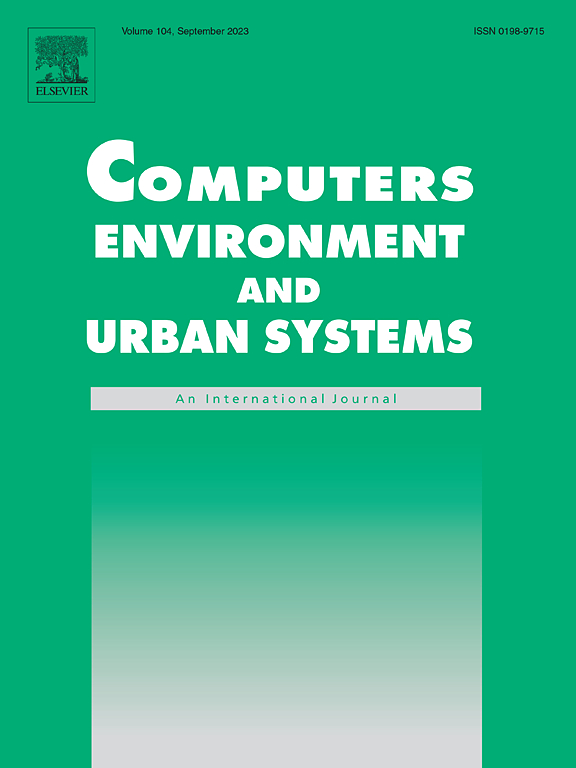实时经验重要吗?比较参与式制图中的回顾性和现场空间数据
IF 7.1
1区 地球科学
Q1 ENVIRONMENTAL STUDIES
Computers Environment and Urban Systems
Pub Date : 2024-08-22
DOI:10.1016/j.compenvurbsys.2024.102159
引用次数: 0
摘要
公众参与 GIS 是一种广泛应用于研究、规划和许多其他领域的方法。传统的参与式数据收集方法是通过数字地图平台,让参与者阐明他们的空间体验和感受。最近,随着智能手机的普及,数据收集也可以在现场进行,参与者可以报告他们在当前地点和时间的空间想法和感受。目前还没有人研究过在回顾性数据收集和现场数据收集之间做出选择的意义,也没有人研究过使用这些方法收集的数据集的可比性或兼容性如何。本文针对这一缺陷,对在捷克共和国奥洛穆茨收集的回顾性数据和现场数据进行了比较分析。通过理论、定量和定性方法的结合,这两种方法之间的差异以及各自的优势和局限性被正式确定下来。我们发现这两种方法的结果存在很大差异,这对方法决策产生了影响。然后对这些影响进行了详细研究,为研究人员和从业人员设计公众参与地理信息系统调查提供了重要指导。本文章由计算机程序翻译,如有差异,请以英文原文为准。
Does real time experience matter? Comparison of retrospective and in-situ spatial data in participatory mapping
Public Participation GIS is a widely used method in research, planning, and many other domains. Approaches to participatory data collection have traditionally taken place , whereby a digital mapping platform is used for participants to elucidate their spatial through to and feelings. More recently, enabled by the proliferation of smartphones, data collection has also taken place in-situ, whereby participants report their spatial thoughts and feelings at their current location and time. There has yet to be any investigation into the implications of choice between retrospective and in-situ data collection, nor has there been any investigation into how comparable or compatible datasets collected using these methods might be expected to be. This paper addresses this shortcoming by providing a comparative analysis of retrospective and in-situ data collected in Olomouc, Czech Republic. Through a combination of theoretical, quantitative and qualitative approaches, the differences between the two methods are formalised along with their respective benefits and limitations. We find substantial differences between the results of the two methods, which have implications for methodological decision making. These implications are then examined in detail, providing critical guidance in the design of Public Participation GIS surveys for researchers and practitioners.
求助全文
通过发布文献求助,成功后即可免费获取论文全文。
去求助
来源期刊

Computers Environment and Urban Systems
Multiple-
CiteScore
13.30
自引率
7.40%
发文量
111
审稿时长
32 days
期刊介绍:
Computers, Environment and Urban Systemsis an interdisciplinary journal publishing cutting-edge and innovative computer-based research on environmental and urban systems, that privileges the geospatial perspective. The journal welcomes original high quality scholarship of a theoretical, applied or technological nature, and provides a stimulating presentation of perspectives, research developments, overviews of important new technologies and uses of major computational, information-based, and visualization innovations. Applied and theoretical contributions demonstrate the scope of computer-based analysis fostering a better understanding of environmental and urban systems, their spatial scope and their dynamics.
 求助内容:
求助内容: 应助结果提醒方式:
应助结果提醒方式:


